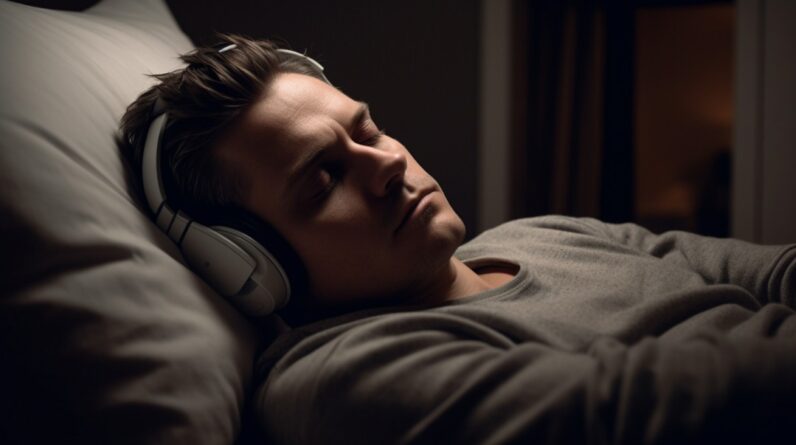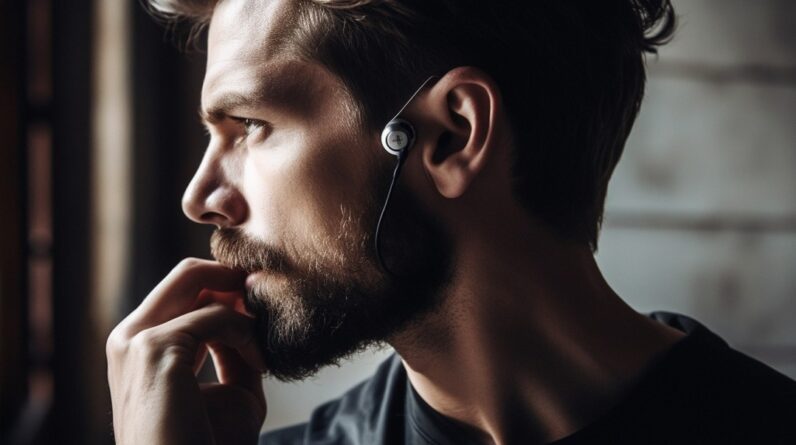
We may earn money or products from the companies mentioned in this post.
As an Amazon Associate I earn from qualifying purchases.
Introduction
Tinnitus, a condition characterized by a ringing or buzzing in the ears, can be more than just an annoyance. It can impact work, sleep, and everyday activities, ultimately affecting overall quality of life. This auditory perception with no external source is a complex condition that has various causes and can present differently from person to person. Gaining an understanding of tinnitus helps in both managing and finding the best therapies for it.
Causes and Symptoms of Tinnitus
Tinnitus is often linked to damage or changes in the ears or auditory system. It’s not a disease in itself but a symptom of underlying health conditions. Some common causes include chronic loud noise exposure, particular medications, ear infections, a blockage of earwax, age-related hearing loss, and diseases like Meniere’s. Stress and depression can exacerbate tinnitus.
Symptoms typically include hearing sounds like buzzing, ringing, humming, grinding, or hissing when no external sound is present. Some people may experience it in one or both ears, while others perceive it as a noise emanating from the head. Severity can range from mildly annoying to severely distressing, affecting sleep, concentration, and emotional well-being.
Can a Chiropractor Help with Tinnitus?
In some cases, tinnitus could be linked to ailments related to the upper spine or neck. If your symptoms are connected with a misaligned neck or an issue related to your upper cervical spine, there’s a possibility that a correction in these areas might alleviate the tinnitus condition. However, this doesn’t apply to everyone since the cause of tinnitus varies widely from person to person.
How Color Noise Helps with Tinnitus
Color noises, characterized by the power spectral density of the signal delivered per Hertz, are used to manage tinnitus. Each color noise has a certain frequency or bandwidth of frequencies that could help mask or manage tinnitus sounds. It provides a form of sound therapy for individuals suffering from this condition, helping to divert attention away from the ringing or buzzing. It’s not a cure but a way to make the symptoms less noticeable.
Best Color Noise for Tinnitus
Not all color noises are the same. They vary from white to pink, brown, blue, and violet, each with a different frequency spectrum. When it comes to tinnitus, there’s no one-size-fits-all solution. The “best” color noise would depend on the individual’s tinnitus frequency. You have to find the right match that blends seamlessly with your specific tinnitus sound. It’s about experimenting with different color noises and figuring out which one offers the most relief- a truly personalized approach to tinnitus management.
Tinnitus and Noise Cancelling Headphones
The utilization of headphones, more specifically, noise-canceling headphones, in tinnitus management is quite noteworthy. Hearing external sounds can divert attention away from tinnitus symptoms, and headphones help access these sounds easily, whether it’s music, podcasts, or color noise tracks. But, the question is, are tinnitus noise-canceling headphones beneficial?
Using these headphones can indeed help manage tinnitus symptoms for some people. They help create a quiet environment, where you can focus on less obvious sounds. However, it’s important not to use these continuously or at a loud volume, as it could potentially exacerbate the tinnitus. Relying on them too much might also lead to a lack of habituation to tinnitus. Remember, everyone’s tinnitus journey is different; what might work for one person might not necessarily work for another.
Different Types of Color Noise and Their Effects
When we delve into color noise, we find that not all color noise is equal. They vary greatly depending on their power densities over the course of various frequencies. Let’s explore how these different ‘colors’ interact with tinnitus symptoms.
Low-frequency Tinnitus and the Effect of Color Noise
Low-frequency tinnitus may affect several individuals, with the noise being comparable to a low drone or hum. For such cases, color noises falling lower on the frequency spectrum, such as pink or brown noise, might be beneficial. These noises carry more energy at lower frequencies, making them blend well with low-frequency tinnitus and thus providing some relief.
Pink Noise: An Effective Solution for Tinnitus?
Pink noise is akin to the natural sounds of rainfall or wind rustling through the trees. The power of pink noise decreases as the frequency increases, making it less harsh on the ears. Many people with tinnitus find pink noise soothing and effective in reducing the perception of their tinnitus sounds, especially during the night. It promotes better sleep and relaxation times.
Brown Noise and Tinnitus
In contrast to pink noise, brown noise delivers even more power at lower frequencies. It sounds like a deep, roaring waterfall or heavy wind and is often used during sleep or relaxation times. For those with tinnitus, brown noise can be a godsend by masking those intrusive tinnitus sounds. Again, the efficacy depends on the precipitation of one’s tinnitus noise. Trying out different color noises is the best way to find the right fit.
Tinnitus Treatment and Management Specifics
Effectively managing tinnitus involves a multifaceted approach tailored towards the individual’s specific needs. Treatments range from pharmaceutical options to behavioral therapy and various alternative practices. Sound therapy, including the use of color noise, is one method that has gained considerable recognition in recent years. However, it’s crucial to remember that what works best may vary widely from one individual to another.
Typewriter Tinnitus Treatment
A unique subtype of tinnitus, termed typewriter tinnitus, creates a clicking sound that could be possibly linked to the motion of the palate muscles. For such cases, treatment may involve addressing the root cause, such as correcting a misalignment in the palate or early detection and management of palate spasms. The use of color noise might also be beneficial in such cases by providing distraction and helping in tinnitus habituation.
Does Medicare Cover Tinnitus?
As a chronic condition, tinnitus can mean a long-term expense for many. But does insurance, especially Medicare, cover tinnitus treatment? Medicare typically doesn’t cover routine hearing exams, hearing aids, or exams for fitting hearing aids, which are often utilized in tinnitus management. However, if your tinnitus is symptomatic of an underlying condition that requires medical treatment, Medicare may cover some costs. It’s always crucial to check and understand your plan details and out-of-pocket costs.
Conclusion
Determining which is the “best” noise for tinnitus is subjective. It relies on many factors, including the unique characteristics of your tinnitus, your personal comfort, and the sound environment that you’re in. If color noise helps minimize your perception of tinnitus without causing undue annoyance, then it could be deemed as the best noise for you.
Remember, tinnitus treatment is not a one-size-fits-all, and it is characterized by trial and error to a large extent. Consulting with a healthcare professional or an audiologist can help tailor a strategy specifically for your conditions. The innovations in the field of sound therapy are promising – offering hope to millions grappling with persistent tinnitus.
Best Color Noise For Tinnitus - Frequently Asked Questions (FAQ)
Brown noise for tinnitus, often compared to the sound of a roaring waterfall or heavy wind, is particularly beneficial for those who hear low-frequency tinnitus sounds. By concentrating more power at lower frequencies, brown noise helps mask the intrusive tinnitus sounds and provides relief, making it a popular choice amongst tinnitus sufferers.
Color noise helps with tinnitus by providing a form of sound therapy. It creates a background audio environment that can divert the brain’s focus away from the tinnitus sounds. It’s not a cure, but it can make the symptoms less intense and more manageable for tinnitus sufferers.
In some cases, tinnitus could be linked to ailments related to the upper spine or neck. If the cause of your tinnitus is a misaligned neck or an issue related to your upper cervical spine, chiropractic treatment may help alleviate the condition. However, this doesn’t apply to everyone as the cause of tinnitus varies widely from person to person.
The best treatment for tinnitus is unique to each individual. It depends on the underlying cause, the severity of the symptoms, and the individual’s response to specific therapies. Treatment options range from medication, cognitive-behavioral therapy, tinnitus retraining therapy, to using sound therapy such as color noise. It is crucial to consult with a healthcare professional to thoroughly understand the available treatment options.
Typically, Medicare does not cover routine hearing checks, hearing aids, or exams for fitting hearing aids, which are often used in tinnitus management. However, if your tinnitus is symptomatic of a medical condition that needs treatment, Medicare might cover some costs. It’s essential to check your plan details to understand out-of-pocket expenses.
Amazon and the Amazon logo are trademarks of Amazon.com, Inc, or its affiliates.
Related posts:
- Understanding ADHD and Tinnitus: Is there a Connection?
- Beyond the Ringing: The Unexpected Connection Between OCD and Tinnitus
- Antibiotics and Tinnitus: The Hidden Link and How to Protect Your Hearing
- Unlocking the Power of Hearing Aids for Tinnitus: Your Ultimate Guide to Choosing the Best Tinnitus Hearing Aid








2 Comments